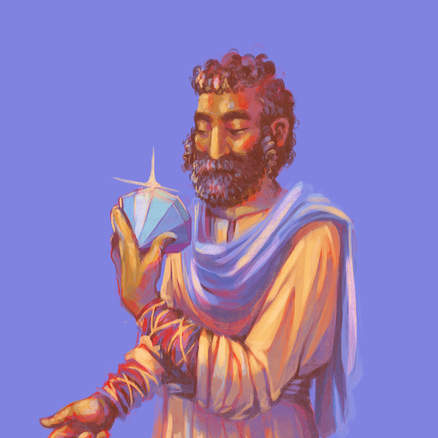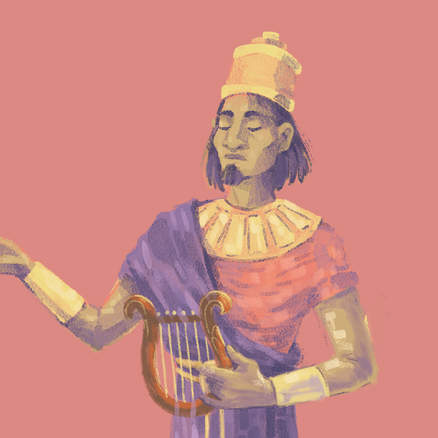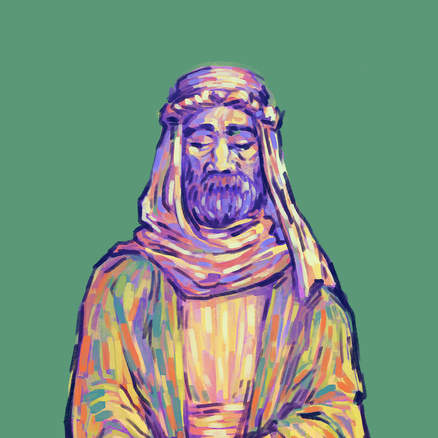
Poetic Metaphor
Understanding poetic metaphor used by the biblical authors to communicate complex ideas will help us read biblical poetry with more insight.
Script
Introduction [00:00-00:22]
Jon: So we’re learning how to read biblical poetry, which makes up over thirty percent of the Bible.
Tim: Yeah. Poetry is a way of writing that doesn’t just communicate information. It invites us to experience ideas with our imaginations, using creative imagery, or what we would call metaphorical language.
Jon: Alright. Let’s talk about imagery and metaphor in biblical poetry.
Modern Day Metaphors [00:23-01:46]
Tim: So some things in life are easy to understand because they’re tangible, physical experiences, like being cold.
Jon: Yeah. Being cold is no fun.
Tim: But other experiences aren’t as concrete, like when somebody doesn’t like you.
Jon: That’s no fun either.
Tim: So two very different things, but notice how your mind has linked them together without you knowing it. So when we say things like “she gave me the cold shoulder,” or “don’t be so cold.”
Jon: You could also flip it around and think of affection as warmth. “It took him a while to warm up to me,” or “she’s a warm person.”
Tim: Exactly. So we take a basic concept, like warmth, and then we map it onto an abstract concept, like affection. It gives us a more imaginative way to talk about our experiences.
Jon: We’re thinking in metaphors.
Tim: Yeah. They provide the framework for how our minds make sense of the world. Metaphors govern all of our thinking and language.
Jon: Like right there, “metaphors govern.” That’s a metaphor in and of itself, saying that ideas are rulers.
Tim: Or think about a connected metaphor, that competing ideas are “at war.”
Jon: Yeah. In a debate, I have to defend my position and provide backup, so I can win the argument.
Tim: So you can see metaphors aren’t just a fancy way of writing. They’re everywhere in our language, and the metaphors we use shape our imaginations and our behavior. And so it’s no surprise that the biblical poets constantly use metaphorical imagery.
Biblical Metaphor and Imagery [01:47-04:25]
Jon: Now, some metaphors in the Bible are easy to understand, like light is good and darkness is bad.
Tim: But remember, the biblical poets lived in an ancient culture, which means that some of their metaphors might seem kind of strange to us.
Jon: Like what?
Tim: Okay, so picture chaotic water, like a deep, stormy ocean.
Jon: Got it.
Tim: Now, think about a time you were in danger. And then map those two onto each other, and?
Jon: Danger is like chaotic waters.
Tim: Right. And then the biblical authors take it further. They also talk about dangerous people as stormy waters, like in Psalm 69. “Save me O God, for the waters are up to my throat, I’ve entered the deep waters, my enemies outnumber the hairs of my head.”1
Jon: Oh, the enemies are dangerous waves.
Tim: Yes, and so are enemy nations, like in Isaiah 17. “Woe to the nations that rage, like the raging, roaring seas.” Or in Psalm 89, “O Lord, you rule the swelling seas...You scatter enemies with your mighty arm.”2
Jon: So this is a basic metaphor for danger and chaos in our world, but God has the power over the chaotic waters.
Tim: Right. And this foundational image is so important, it’s introduced on page one of the Bible.
Jon: Oh right. The uncreated world in Genesis 1 is a dark, chaotic ocean that God brings order to.3
Tim: Exactly. The image begins there and then develops throughout the rest of the Bible, and so does its opposite. If chaotic water is a fundamental image of danger, think about what dry land would represent.
Jon: Dry land would be safety, security, and stability.
Tim: Exactly, some of the most basic human desires. And that is what God is providing when the dry land appears in the opening pages of Genesis.4
Jon: And this is also where God plants the garden of Eden.
Tim: And it's no average garden! It’s described with imagery of an ancient temple, high above those dangerous waters. And then from this garden-temple flows a river that waters everything.5
Jon: So the human ideal is to be with God in a mountain-garden-temple?
Tim: Yes! This image permeates biblical poetry, like when David celebrates God’s presence in the temple in Psalm 65.
Jon: “How blessed is the one who’s satisfied with goodness in your temple... a stream of God waters the land... You still the roaring of the waves and the turmoil of the nations.”6
Tim: Now watch. Because the temple was associated with being close to God’s presence, this high rock could become a metaphor for God himself, like in Psalm 18. “The Lord is my rock and my fortress and my deliverer.”7
Jon: And that’s the image Jesus is drawing on when he says that listening to him is like building your house on the rock.
Conclusion [04:26-04:54]
Tim: Exactly. And so notice how these rich metaphors in biblical poetry are rooted in images from earlier biblical narratives. That’s how metaphors work in the bible. You need the narratives to understand the poetic images, and the images reveal deeper meaning in those narratives.
Jon: Cool. Now, the largest collection of poetry in the Bible is the book of Psalms.
Tim: And learning how to read the book of Psalms, that’s what we’ll talk about next.
Related Content

























